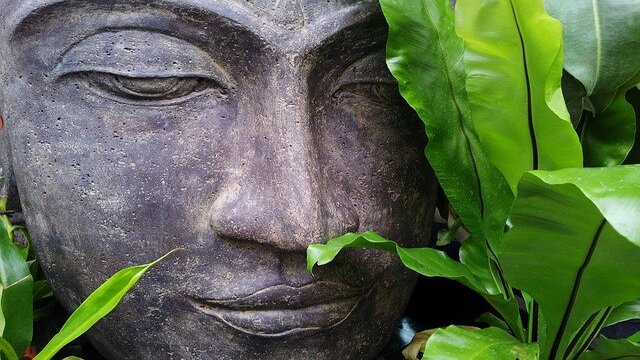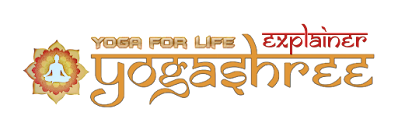For a long time in history, yoga was a secret system with its practices and techniques hidden from public view. In ancient times yoga was an oral tradition, its teachings, and practices number inscribed or written on parchment.
Only through the guru-disciple relationship were the teachings of yoga revealed, and only to those who are ready to study the spiritual practices and techniques.
This system was very productive and useful as it ensured a clear understanding and a strong relationship between the disciple, the guru, and spiritual teachings.
Much importance was given to the personal experience of the yogic system, and the correct path was outlined by the guru who helped remove any confusion or ignorance regarding the spiritual practices and techniques.
Knowledge of Yoga
Only through sincere aspiration with the guru's guide their disciples; disciples who pursued too much intellectual contemplation or were seeking the path of yoga in order to gain boons or powers were denied the teachings and access to the knowledge of yoga.
The first time that yoga was written in the book is inscribed on paper was within the ancient tantras. Later it was also revealed through the Vedas which were written sometime around 500 BC.
Although the Vedas do not give any particular reference to any spiritual practices or techniques, they do you know the system of yoga through metaphors and symbolic representation.
It is said that the Vedas were revealed to me rishis and saints who were immersed in a deep yogic state of meditation known as samadhi.
It wasn't until the Upanishads that yoga began to take a definite shape and noticeable form within a written system.
The Upanishads contained the essence of the Vedas, revealing the most essential points inscribed in the numerous books that collectively made the Vedas. The Upanishads are said to be the culmination of the Vedas and together they make up the Vedantic.
The next significant texts in the history of yoga were the Patanjali yoga Sutras which are said to have been written in the second century A.D. Patanjali's yoga sutras formed the raja yoga system, a definite and unified perspective of yoga with references to techniques, philosophy, and spiritual ideals.
Patanjali's yoga sutras are often referred to as the eightfold path of yoga. The eighth sequences consisted of Yama(self-restraint), Niyama (self observance), Asana, Pranayama, Pratyahara(withdrawal of the senses), Dharana (concentration), Dhyana (meditation), and Samadhi.
Whether practiced in sequence or as a complete system the eightfold path provided a clear perspective of the spiritual path. It also gave an outline for how to accomplish the unification of individual consciousness with the universal cosmos.
Later in the sixth century, BC yoga began to adopt the Buddha's meditation practices as well as the ethical and moral philosophy that later became the outline for Buddhism.
Unfortunately, this transition and adaptation removed a lot of the preparatory practice that were designed by the yogis to prepare one for meditation practices, many of which are necessary and often times vital to the preliminary preparation for contemplation and concentration.
Yoga philosophy believes that before any meditation practice can be done the elements of the body and mind must be balanced in harmony with one another. For this reason, Gorakhnath presented an extended series of practices to prepare the body for meditation.
These practices were later employed as the hatha yoga system. Later one of the major authorities on hatha yoga composed the hatha yoga pradipikia, a text that is widely used today and is referred to as Light on Yoga.
The practice of yoga in the 20th and 21st centuries
While the religious philosophy and practices of yoga have endorsed the next order of dwelling and considering, at this time yoga has been disseminated for all kinds of functions and practices, some religious, some not.
Although many individuals follow yoga as a way to achieve knowledge of the religious life, there are additionally many who make the most of yoga as a way to assist within the well being, health, stability, stability, and well-being of the human physique, thoughts, and soul.
With trendy language in thoughts, many types of yoga have emerged together with yoga psychology, yoga remedy, yoga health, yoga dance, and nearly any synergy possible particularly these related to the humanities and different types of self-expression though we've got not the time to debate all of those.
The modern expression of yoga mixed with the traditional traditions of India has led yoga into a brand new dimension of philosophy, psychology, drugs, remedy, and religious science of which all are practiced each domestically in India and practically all different international locations overseas.
Yoga is not restricted by the confines of society and has unfurled itself inside a world society through which all people can search refuge beneath the religious order and science of yoga.
As individuals start to discover the full potential of consciousness, life's elementary function is revealed and our true nature is expressed in its fullest type.
Yoga is Bharat's(India) gift to World
Although Indian's have benefited from the science of yoga for practically 15,000 years, yoga is now making its method into the everyday lives of individuals everywhere around the globe.
Whether it's launched as a medicinal follow or a way for constructing muscle tissue and agility, yoga ultimately carries every particular person in direction of the upper targets which might be embedded within the practices and strategies outlined by the yogic science.
Also read:

















No comments:
Post a Comment
Thanks for reading my blog